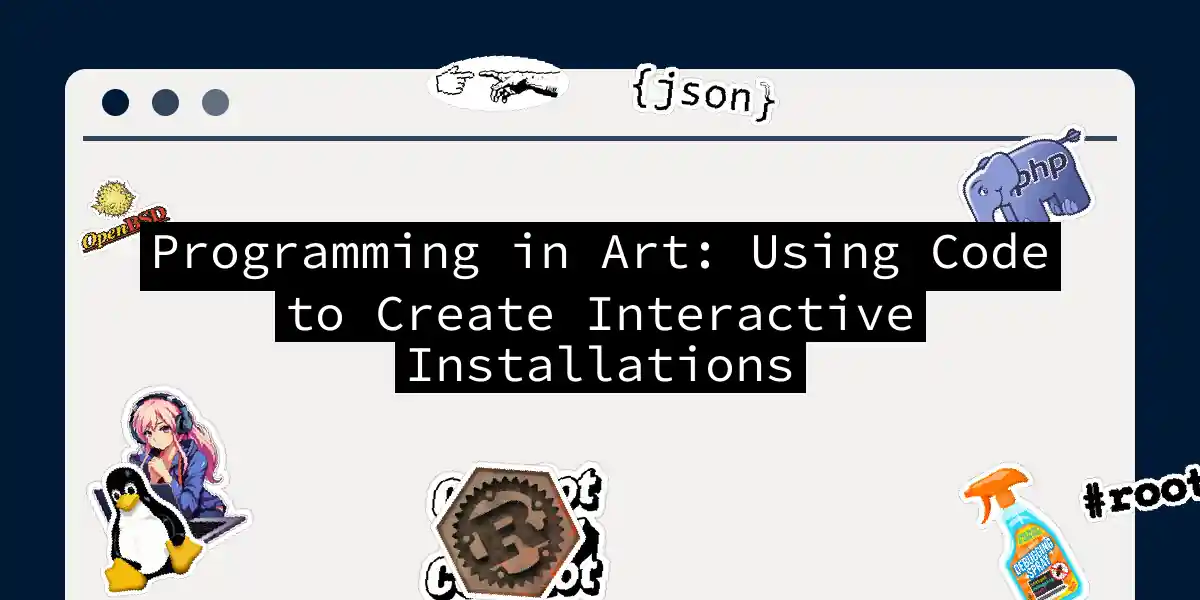The Intersection of Code and Canvas
In the ever-evolving world of art, technology has become an indispensable tool, allowing artists to push the boundaries of creativity and engagement. One of the most fascinating areas where code meets canvas is in the creation of interactive installations. These installations not only captivate audiences but also invite them to become an integral part of the artwork itself.
What is Interactive Art?
Interactive art is a form of contemporary art that involves the viewer in such a way that they become part of the artwork or influence its outcome. This genre often employs computer technologies, interfaces, and sensors to react to various inputs like movement, temperature, or other environmental changes.
The Role of Programming
Programming is the backbone of interactive art installations. It allows artists to translate their ideas into dynamic, responsive, and often immersive experiences. Here’s how programming can be used to create these installations:
1. Sensors and Input Devices
To create an interactive installation, you need to capture user input. This can be done using various sensors such as motion detectors, cameras, or even simple buttons. For example, a camera can track the movement of visitors and trigger visual effects accordingly.
2. Programming Languages and Tools
Several programming languages and tools are suitable for creating interactive art. Python, with its extensive libraries like OpenCV for computer vision and Pygame for game development, is a popular choice. Other tools include software like HeavyM, which is specifically designed for creating interactive visual effects.
3. Interactive Elements
Interactive elements can range from simple buttons to complex algorithms that analyze and respond to user behavior. For instance, an installation might use machine learning to adapt its visuals based on the emotions detected on the faces of visitors.
Step-by-Step Guide to Creating an Interactive Installation
1. Concept and Design
Start by conceptualizing your installation. What theme do you want to explore? How do you want the audience to interact with your artwork? Sketch out your ideas and create a detailed plan.
2. Choosing Hardware and Software
Select the hardware and software that best fit your concept. This might include cameras, sensors, projectors, and programming languages or tools like Python, OpenCV, and HeavyM.
3. Setting Up the Environment
Set up your environment by installing the necessary software and connecting your hardware. Ensure that your sensors and input devices are correctly configured to capture user data.
4. Writing the Code
Write the code that will process the input data and generate the desired output. For example, you might write a Python script that uses OpenCV to detect movement and trigger visual effects.
import cv2
# Initialize the camera
cap = cv2.VideoCapture(0)
while True:
# Capture frame-by-frame
ret, frame = cap.read()
# Convert the frame to grayscale
gray = cv2.cvtColor(frame, cv2.COLOR_BGR2GRAY)
# Apply threshold to detect movement
_, thresh = cv2.threshold(gray, 25, 255, cv2.THRESH_BINARY)
# Display the resulting frame
cv2.imshow('frame', thresh)
# Check for movement
if cv2.countNonZero(thresh) > 1000:
# Trigger visual effects
print("Movement detected!")
# Press 'q' to quit
if cv2.waitKey(1) & 0xFF == ord('q'):
break
# Release the camera and close the window
cap.release()
cv2.destroyAllWindows()
5. Testing and Deployment
Test your installation thoroughly to ensure that it works as intended. Once satisfied, deploy it in the desired location, whether it’s a gallery, museum, or public space.
Examples of Interactive Installations
Interactive Light Installations These installations use sensors to detect movement and adjust lighting patterns accordingly. For example, a room filled with LED lights that change color and intensity based on the movement of visitors.
Video Mapping Video mapping involves projecting visuals onto physical surfaces, often in response to user input. This can create immersive environments where visitors feel fully engaged with the artwork.
Immersive Installations Immersive installations aim to surround the viewer with a complete sensory experience. This can include sound, visuals, and even physical elements that respond to user interactions.
Conclusion
Interactive art installations are a fascinating blend of technology and creativity, offering a unique way to engage audiences and push the boundaries of artistic expression. By leveraging programming skills and the right tools, artists can create dynamic, responsive, and captivating experiences that leave a lasting impression on viewers.
So, the next time you find yourself in a gallery or museum, take a closer look at those interactive installations. You might just discover the magic of code woven into the fabric of art.
